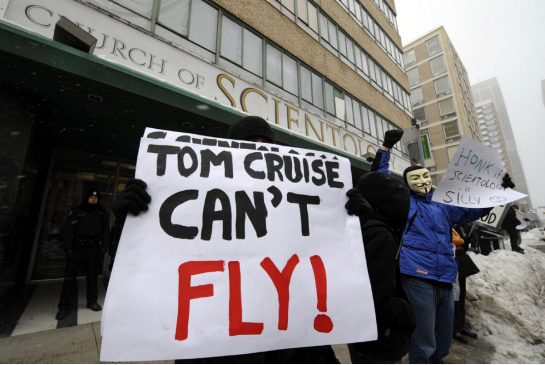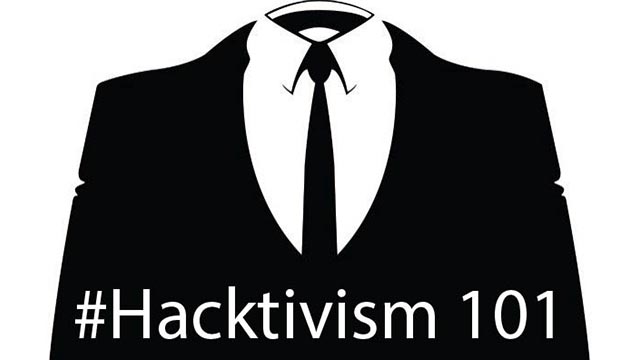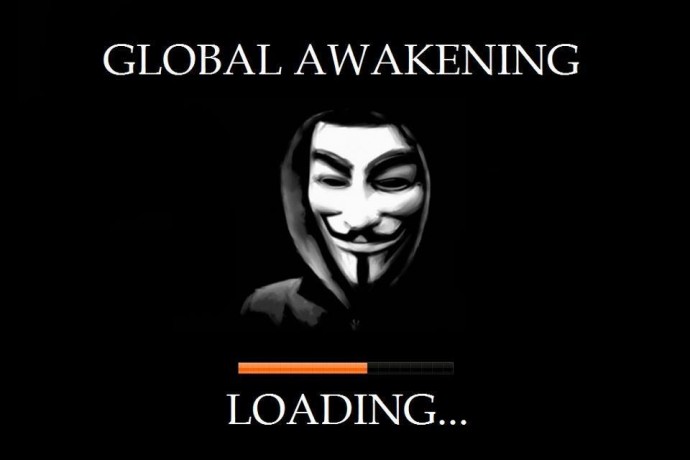Anonymous and Technology: A Hoax or Call for Revolution?
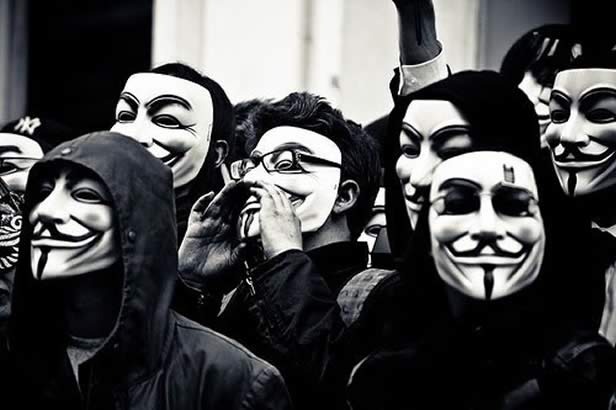
As Slater’s character says in USA’s Mr. Robot, “It controls you and everyone you care about… Money…It’s become virtual. Software –the operating system of our world”, technology truly has become a force to reckon with. It’s interesting to see how the definition of technology and all that it entails has evolved over time, eventually becoming a magical entity which suddenly made information on the remotest of topics available just a simple click away.
In an attempt to move away from the fictional world of TV shows to the domain of international politics, one wonders how different Anonymous’ taking down of the Israeli websites in response to their attack on Palestinian cyber space is from Elliot’s attempts to take down E corp.
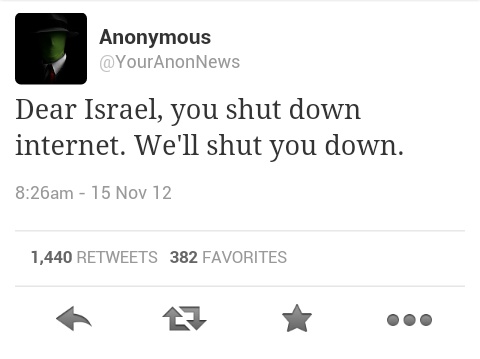 The past decade has revealed the potency of technology in bringing down governments and international institutions. The Arab Springs is a perfect example of a situation where social media became the realm of youth-mobilisation against what was seen as injustice done by the system. When one talks of technology as the space for revolution and change, it is impossible to not delve into an elaborate discussion on Anonymous.
The past decade has revealed the potency of technology in bringing down governments and international institutions. The Arab Springs is a perfect example of a situation where social media became the realm of youth-mobilisation against what was seen as injustice done by the system. When one talks of technology as the space for revolution and change, it is impossible to not delve into an elaborate discussion on Anonymous.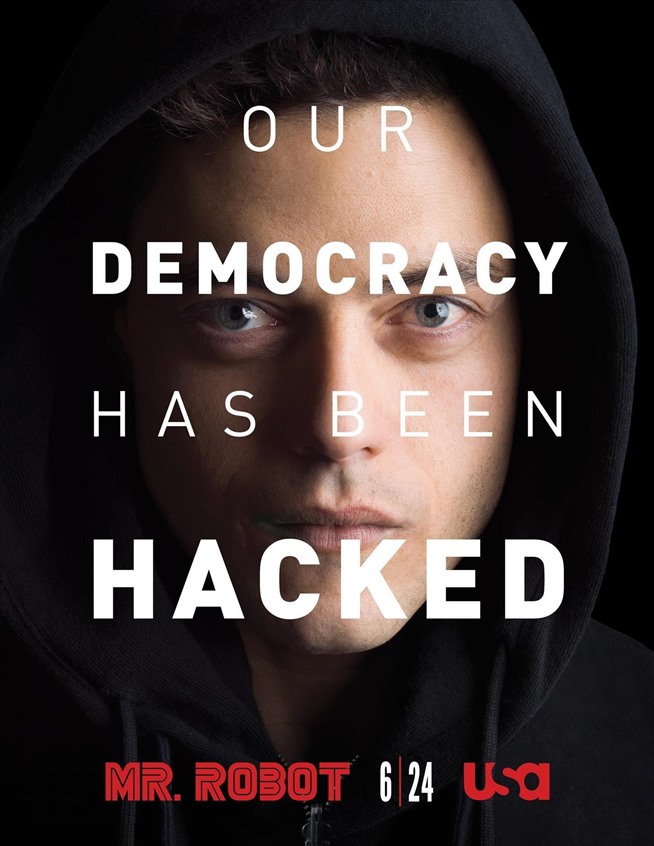
Describing themselves as “an internet gathering” with “a very loose and decentralized command structure that operates on ideas rather than directives”, the group emerged in 2003 and became self-professed defenders of those facing oppression at the hands of political or religious institutions. Anonymous provided the template for any group of maverick hackers trying to bring down big corporate houses, the State or any power structure threatening the well-being of a community. There is perhaps a reason Anonymous has gained a potent cult following, with TV shows like Mr. Robot being the latest reminders of it.
Here’s a closer look at top five successful hacking operations carried out by Anonymous that made the world sit up and think:
1. Project Chanology (2008): One of the first prominent hacking activities of the group, this project involved a series of DDoS in 2008 against the Church of Scientiology. As part of this attack, a group of Anons posted a video on YouTube where a robotic voice declared, “For the good of your followers, for the good of mankind—for the laughs—we shall expel you from the Internet.” Needless to say, within a week the video had earned hundreds of thousands of views all over the world.
2. Operation: Payback is a Bitch (2010): In 2010, Anonymous came across an Indian software company called Aiplex Software that carried out DDoS attacks against websites like the Pirate Bay that carried pirated content. On September 17th, within a week of having stumbled upon this company, Anonymous launched a DDoS against the site which shut it down for a day. It soon snowballed into a cyber-war which included Anonymous coming to the aid of various bitTorrent sites. The message was emphatic and well-articulated as Anons went ahead to declare in an official statement, “Anonymous is tired of corporate interests controlling the internet and silencing the people’s rights to spread information, but more importantly, the right to SHARE with one another”. The name of the project was put on a hacked website of copyright alliance.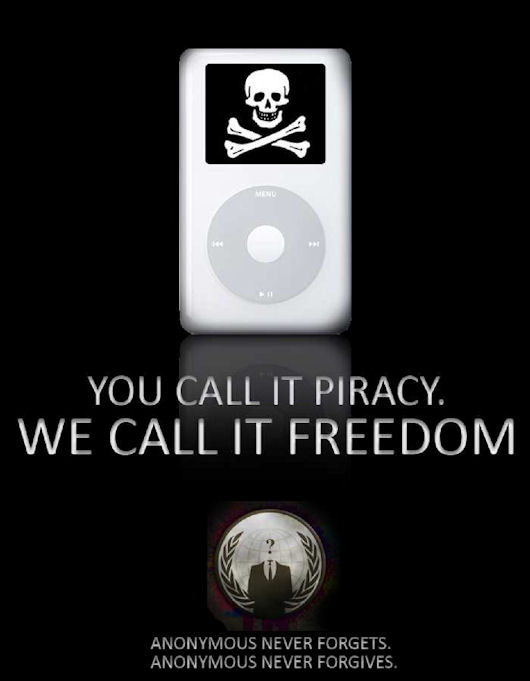
3. Operation Avenge Assange (2010): This became an extension of Project Payback as the Anons took charge of hacking into all those websites which had refused to allow donations to WikiLeaks. Beginning with DDoS attacks against PayPal, Anons hacked into MasterCard and Visa websites, among others. This resulted in PayPal announcing the release of its frozen funds to be directed towards WikiLeaks. Also, in December of the same month, The Daily Telegraph reported a threat by Anonymous to hack into the British government websites if Assange were extradited to Sweden.
4. Operation Darknet (2011): In October, 2011, Anonymous began a series of DDoS attacks against Lolita City, a child pornography website. Anons stated in an official statement, “We vowed to fight for the defenseless, there is none more defenseless than innocent children being exploited.” Multiple demands and warnings were made and issued respectively to take down the server. This was followed by a manifesto in the form of a YouTube video.
When the servers still remained untouched, Anonymous revealed a list of 1589 users of Lolita City along with detailed records of their profiles. The FBI and Interpol were asked to look into the matter further. Eventually a total of 40 child pornography websites were taken down by Anonymous in 2011 itself.
5. Anonymous-ISIS Cyber-War (2015): Earlier in 2015, a group of Anons called GhostSec started a cyber-campaign called #OpISIS against the Islamic State (IS). The campaign is aimed at targeting those members of the extremist IS who are using the internet as a platform to spread propaganda and fundamentalism. In order to “cure the ISIS virus” they are keeping a close track of the activities of the members of IS across various social media platforms. Even as early as April 8, 2015, Anonymous had managed to attack 233 websites, destroy 85 websites and terminate 25,000 Twitter accounts. Though this did result in a significant lull in the intra-group activities of IS, the move was criticised by many for it meant bigger obstacles in keeping track of IS activities.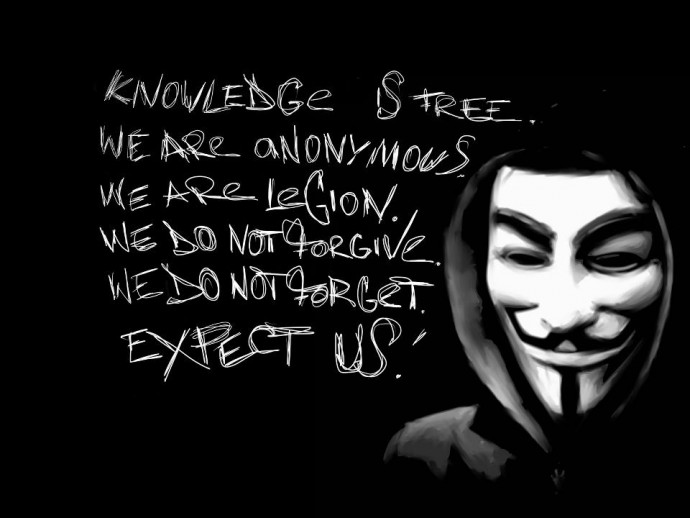 These are just a few examples of what Anonymous has been up to since its inception over a decade ago. Often identified as the archetypal trickster, no one’s really sure of what to make of this secret, super snazzy self-proclaimed group of “hackists”. One is often tempted to wonder if they are operating as vigilantes, saviours of the world from religious and political institutions, or if they are only there for a few laughs, trolling the most powerful organisations of the world simply because they can.
These are just a few examples of what Anonymous has been up to since its inception over a decade ago. Often identified as the archetypal trickster, no one’s really sure of what to make of this secret, super snazzy self-proclaimed group of “hackists”. One is often tempted to wonder if they are operating as vigilantes, saviours of the world from religious and political institutions, or if they are only there for a few laughs, trolling the most powerful organisations of the world simply because they can.
Could technology truly be the space for bringing about the change the reformers, revolutionaries and anarchists of the world dream of? Or is it simply a hoax, an illusion of power given to people to keep them appeased by hiding from them their absolute powerlessness?
The realm of technology clearly raises more questions than it answers. Adding to the blur of conflicting opinions are groups like Anonymous which still leave us unsure of their position in this rigmarole of politics, power, society and ideology. Until the day a consensus is reached, if one is reached at all, here’s to the riot of social media, the fan-following of Anonymous, and well, to the threat of a futuristic society where artificial intelligence enslaves humanity to save a race turned upon itself.
















